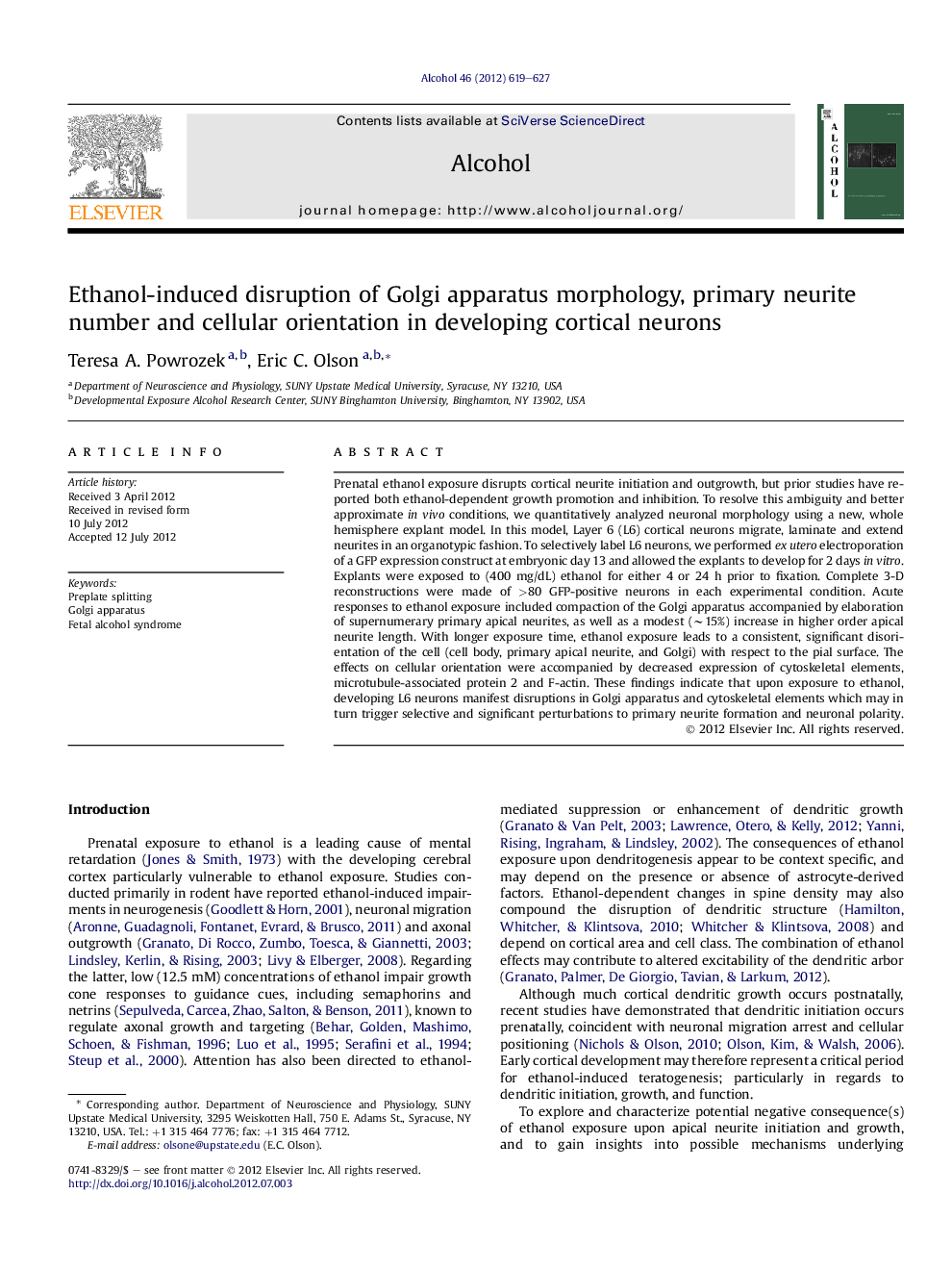| Article ID | Journal | Published Year | Pages | File Type |
|---|---|---|---|---|
| 1067176 | Alcohol | 2012 | 9 Pages |
Prenatal ethanol exposure disrupts cortical neurite initiation and outgrowth, but prior studies have reported both ethanol-dependent growth promotion and inhibition. To resolve this ambiguity and better approximate in vivo conditions, we quantitatively analyzed neuronal morphology using a new, whole hemisphere explant model. In this model, Layer 6 (L6) cortical neurons migrate, laminate and extend neurites in an organotypic fashion. To selectively label L6 neurons, we performed ex utero electroporation of a GFP expression construct at embryonic day 13 and allowed the explants to develop for 2 days in vitro. Explants were exposed to (400 mg/dL) ethanol for either 4 or 24 h prior to fixation. Complete 3-D reconstructions were made of >80 GFP-positive neurons in each experimental condition. Acute responses to ethanol exposure included compaction of the Golgi apparatus accompanied by elaboration of supernumerary primary apical neurites, as well as a modest (∼15%) increase in higher order apical neurite length. With longer exposure time, ethanol exposure leads to a consistent, significant disorientation of the cell (cell body, primary apical neurite, and Golgi) with respect to the pial surface. The effects on cellular orientation were accompanied by decreased expression of cytoskeletal elements, microtubule-associated protein 2 and F-actin. These findings indicate that upon exposure to ethanol, developing L6 neurons manifest disruptions in Golgi apparatus and cytoskeletal elements which may in turn trigger selective and significant perturbations to primary neurite formation and neuronal polarity.
